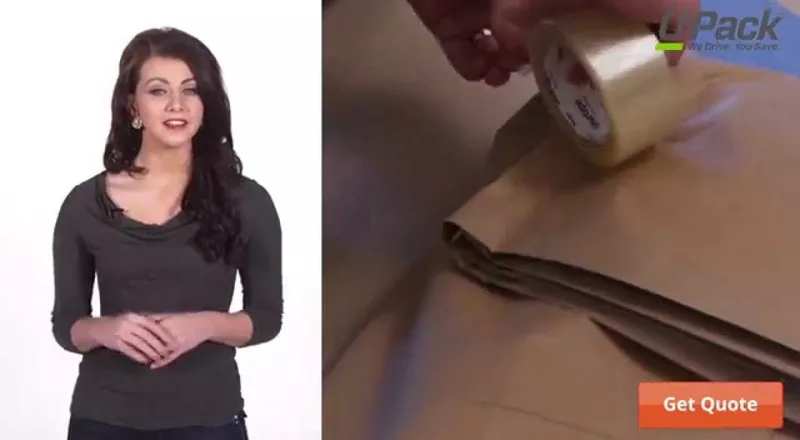How to Use Paper Padding for Moving
Protect your items with paper pads
As you pack, you’ll need to protect furniture from damage, keep fragile lamps safe, and shield appliances from scratches and dings. Paper padding is a versatile moving supply that’s perfect for all of these applications. Take a closer look at what it is, learn how to use it, and find out how much you’ll need.
What is paper padding?
Unlike packing paper, which is single-ply and generally used for protecting belongings in boxes, paper padding is triple-layer and is used to protect individual items against nicks, scratches and dust. Professional movers use it to wrap furniture and appliances, so it’s perfect for DIY movers as well.
How is it different from moving blankets?
Paper padding is different from moving blankets because it’s recyclable. Each pad is also a bit smaller than a traditional moving blanket, which can be useful for smaller pieces of furniture. You can also cut the pads to wrap furniture legs or smaller pieces.
How to use furniture pads
Paper pads are ideal for covering appliances, and wooden, upholstered and leather furniture. Just use the sheets like wrapping paper, totally covering the item and tucking the corners in.
Follow these steps to use paper padding to wrap your furniture, appliances and other items:
- Cover large items by taping multiple pads together
- Remove external hardware when possible (if it can’t be removed, use extra padding or a piece of cardboard to protect it)
- Use two layers of tape on sharp corners or use additional layers of padding on delicate areas
- Use cardboard sheets or deconstructed moving boxes underneath the paper padding for extra protection or stability
- Wrap legs individually
- Secure the padding with stretch wrap or a couple layers of packing tape (add an extra layer over corners for even more protection)
- Note: Only apply tape to the pads! Tape can damage the finish of furniture or appliances
- Write on the paper pad to designate what the item is and where it will go in the new house
Check out this video for even more tips:
How much do you need?
To determine how many furniture moving pads you’ll need, take a look at how many are typically needed for these items, and inventory your home:
- King headboard: 3 sheets
- Queen/full headboard: 2-3 sheets
- Twin headboard: 2 sheets
- Dining table (seats 6): 1-2 sheets for the legs (cut into pieces), 3 for the tabletop
- Dining table (seats 4): 1-2 sheets for the legs (cut into pieces), 2 for the tabletop
- Dining chair: 1-2 sheets per chair, depending on height
- Nightstand: 1-2 sheets
- Dresser: 2-3 sheets
- Coffee table: 2-3 sheets
- Desk: 2-3 sheets
- Sofa: 3-4 sheets
- Loveseat: 2-3 sheets
- Recliner: 3 sheets
We recommend getting a few extras to account for any items left off a pre-moving inventory list, or to provide additional padding on special items.
Learn more about packing and preparing for moving
Paper padding is just one moving supply that you’ll need on moving day. Several supplies are important for protecting your items — moving boxes, plastic wrap, furniture straps and more. Read through our packing tips, and then find out how to use all of these supplies to prepare for your move like a pro!
More articles you might like...




